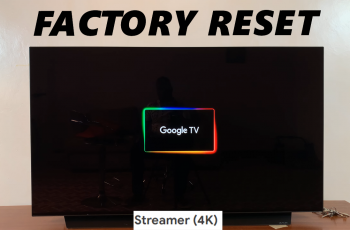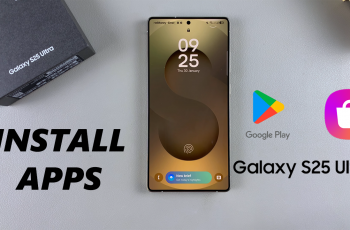The JBL Flip series has long been a go‑to choice for compact, rugged Bluetooth speakers that punch well above their weight.
With the recent release of the Flip 7, many are wondering whether the upgrades justify the price over the still‑excellent Flip 6. This article highlights everything you need to know in the battle between the JBL Flip 7 and the JBL Flip 6.
In this in‑depth comparison, we’ll break down every key area—design, sound, battery, connectivity, durability, and value. This will help you can decide which model best fits your needs to allow you to make a sound decision. You get to decide whether the upgrade is necessary, aided by our verdict at the end.
Read: How To Completely Uninstall MySQL In Windows
JBL Flip 7 vs Flip 6
We have tried to break down what’s new, the differences, even the most subtle ones and the ones that aren’t visible to the naked eye. Let’s go through each individual category in the JBL Flip 7 vs Flip 6 battle.
Size & Weight
Let’s start with the most visible and discernible comparison. A quick look at both speakers side-to-side will indicate that they are exactly the same size. This is indeed the case.
A quick comparison using the old-fashioned weighing scale, your hands, will also confirm that they weigh exactly the same as well. So, not much change there when it comes to weight in the JBL Flip 7 vs Flip 6 comparison.
Stability
The rubberized end-caps have long been a feature of most portable speaker, notably in the JBL ones. On the Flip 6, both ends feature 3-edged rubberized end-caps, while the Flip 7 features 4-edged ones.
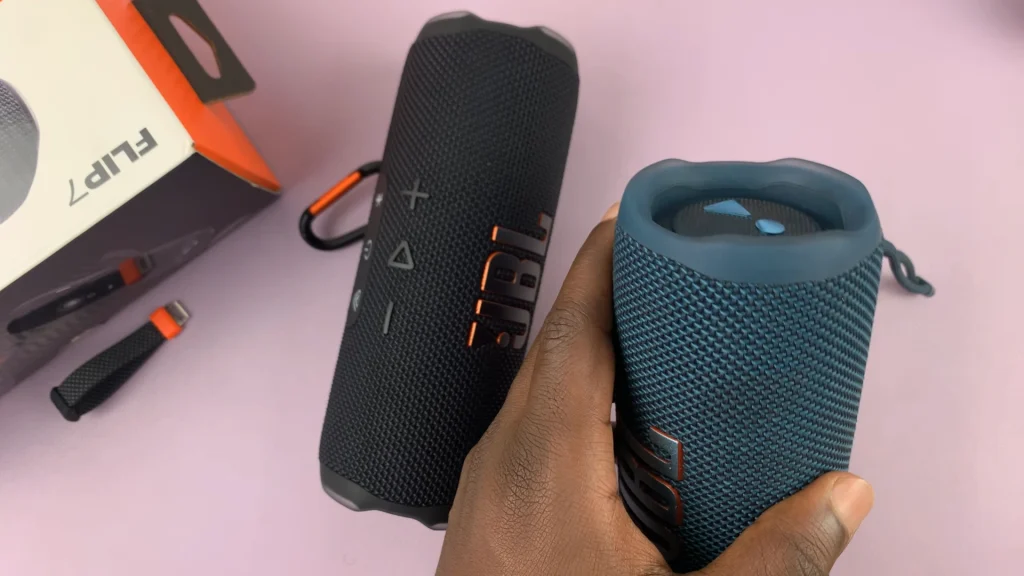
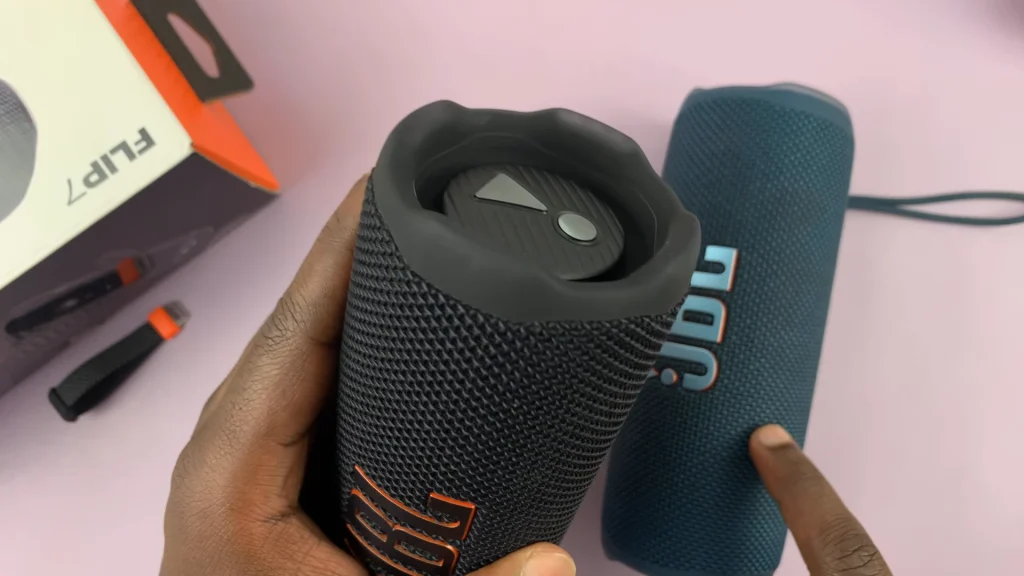
So what, you ask?
Well, the subtle difference offers more stability to the Flip 7. This is evident when you stand the speaker using the end-caps, on a flat surface. The same cannot be said for the Flip 6. It gives off the Leaning Tower of Pisa vibes when you conduct the same experiment.
Subtle, but worth mentioning.
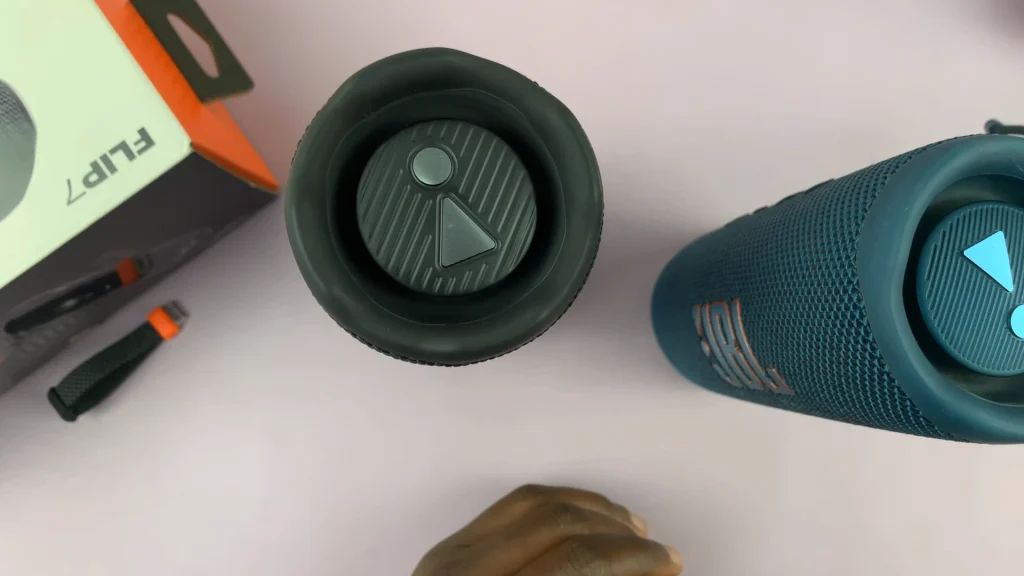
Detachable Carry Strap & Accessories
For starters, even though the JBL Flip 6 comes with a charging cable, the JBL Flip 7 does not. In addition, the Flip 6 has a lace-like carry strap. This strap helps you to hold the speaker securely carry on your arm or hang it somewhere.
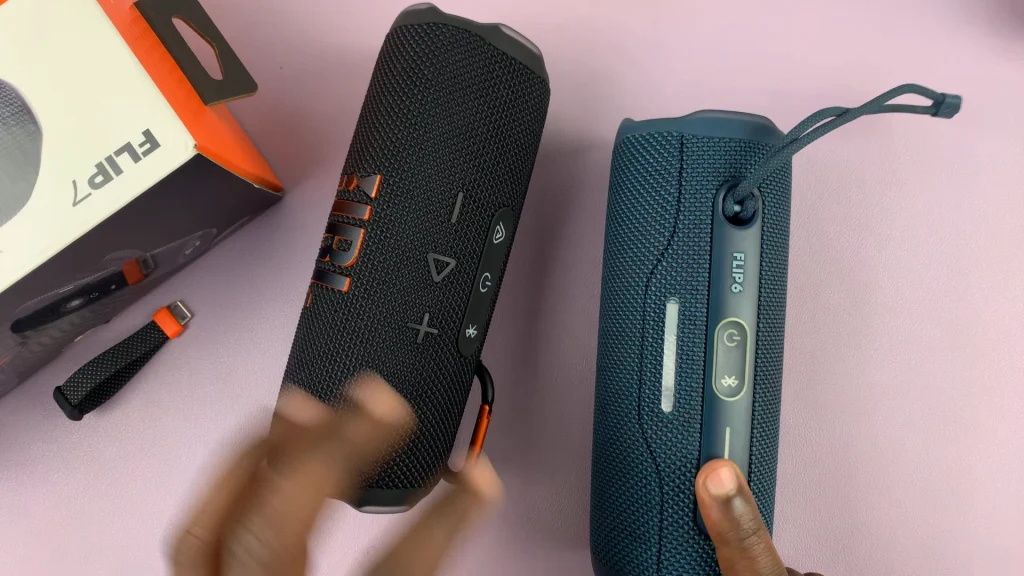
The Flip 7 has an improved design when it comes to the harness. It comes with a detachable removable carry strap with an integrated carabiner clip in the box. The carabiner clip can be latched onto a backpack or your pants. A carry strap is convenient for holding, carrying or hanging somewhere.
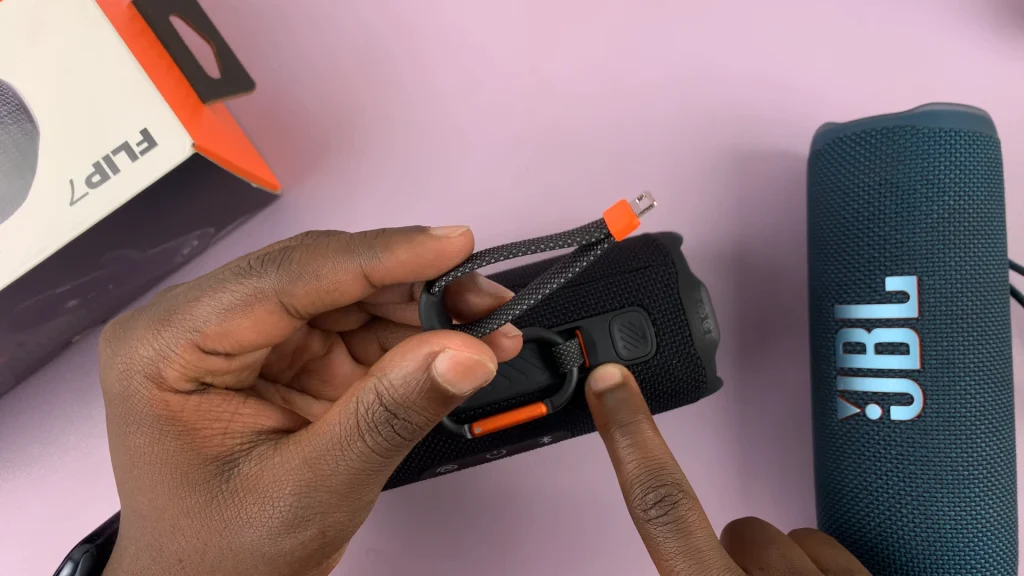
To detach the strap, simply press the button right next to it and pull it out. Then replace it with the carabiner clip, whenever you feel it’s convenient.
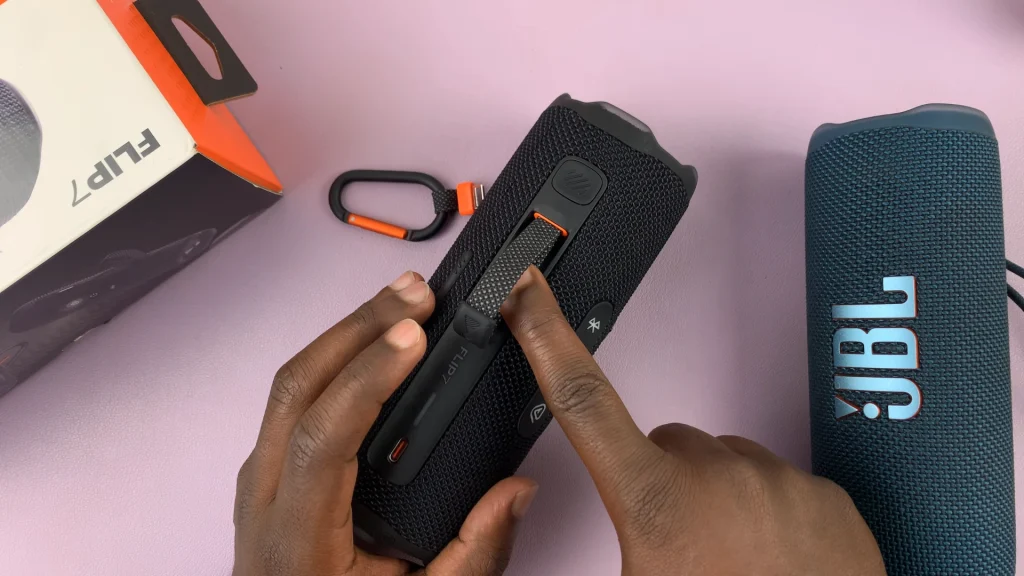
Design & Build Quality
The JBL Flip 6 buttons are more linear with the Volume buttons (+, -), Play/Pause and PartyBoost buttons. They are located just above the well-known accentuated JBL logo on the cylindrical speaker. The LED power button, Bluetooth button, battery indicator and orange-accent USB-C charging port also sit in a linear fashion, adjacent to the lace-like carry band and FLIP6 moniker.
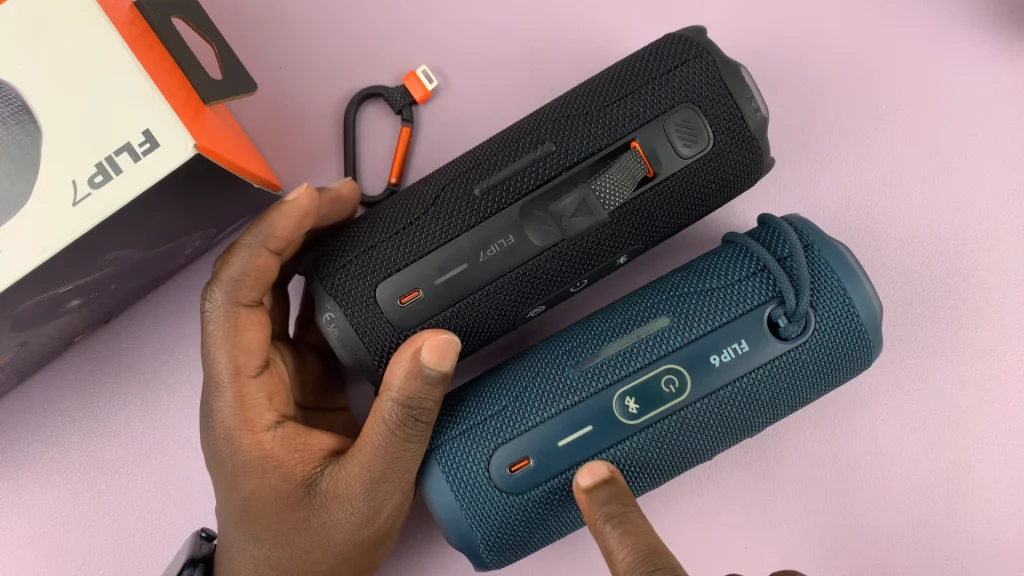
While the JBL flip 7 features all these, there’s a slight rearrangement of them along the cylindrical frame. The Volume (+, -) and Play/Pause buttons sit on their own. They do so in a linear fashion, in their traditional place, right above the logo. Just above them are the LED power, Bluetooth and Auracast buttons. The Auracast button replaces the PartyBoost one in the Flip 7.
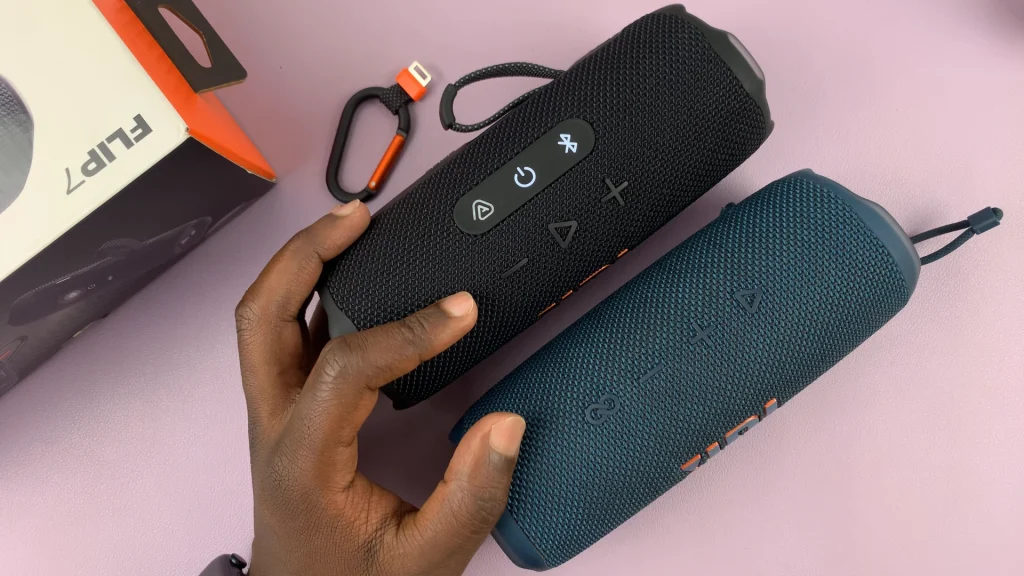
The LED battery indicator and orange-accent USB-C charging port sit in the traditional position. This means that they are in a linear fashion, adjacent to the carry strap, it’s release button and FLIP7 branding.
Water Resistance
Both speakers are built for the outdoors:
The Flip 6 rubber‑coated base helps prevent slipping, and IP67 rating shields against brief submersion. It also means that it is fully dust‑proof and water‑resistant up to 1 m for 30 minutes.
The Flip 7 has a strengthened drop‑tested housing and is upgraded to an IP68 rating means it survives submersion beyond 1 m and withstands dust ingress even better.
JBL Flip 7 vs Flip 6 Playtime & Charging
For those curious about the charging & playback time, the Flip 6 claimed to offer 12 hours of playback on a single charge. However, most tests have averaged around 9–10 hours at normal volumes. This speaker achieves a full charge in roughly 2.5 hours via the USB‑C cable provided in it’s box upon purchase.
The Flip 7 bumps playback time to 14 hours, with an optional PlaytimeBoost mode extending to 16 hours at the expense of reduced bass response. Charging time stagnates at just about 2.5 hours over USB‑C, even though the Flip 7comes without a bundled charger or even cable.
To enable PlaytimeBoost, ensure your speaker is connected to your phone, launch the JBL Portable app, select your Flip 7 and tap on the toggle to turn the feature on.
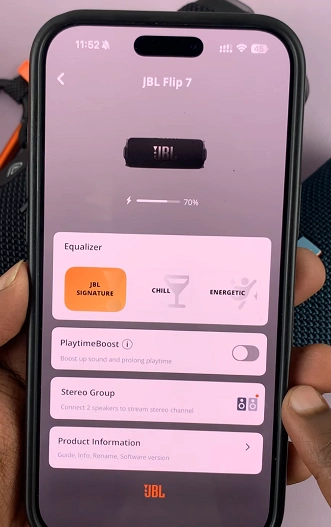
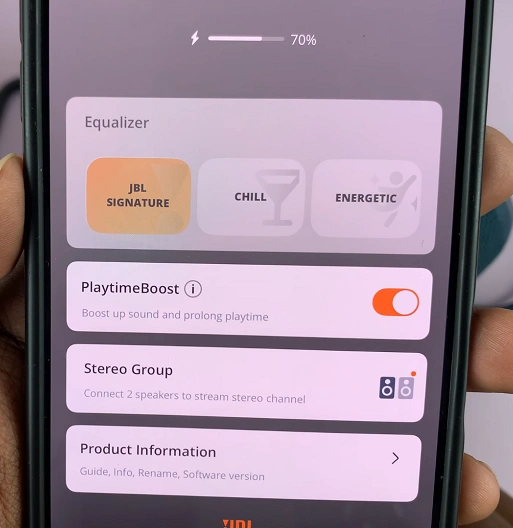
Bluetooth Version & Power Output
The JBL Flip 6 uses Bluetooth 5.1, while the Flip 7 upgrades to Bluetooth 5.4 for more stable connections and marginally increased range. This is a significant upgrade, especially being that the Flip 6 Bluetooth range is a bit shaky across walled units up to a certain range.
The power output standardly is 30W for the Flip 6, while it maxes at 35W for the Flip 7. The difference isn’t clearly discernible. However, with the extended PlaybackTime option, this may just give the Flip 7 an edge in terms of the boost in power output.
JBL Flip 7 vs Flip 6 Sound Signature & Performance
Both speakers employ dual passive radiators for strong bass and feature JBL’s signature core sound for audio voicing. Flip 6 delivers warm lows and clear highs, performing admirably, despite some mid‑range distortion when pushed to maximum volume.
The Flip 7 introduces AI Sound Boost, an on‑board Digital Signal Processor (DSP) that dynamically adjusts equalization to enhance clarity and bass tightness at higher volumes. JBL claim a redesigned tweeter dome that offers richer mid-ranges and tighter lows, with less distortion at loud levels.
Additionally, the Flip 7’s new 7‑band customizable EQ in the JBL Portable app (up from 3‑band on the Flip 6) allows finer tuning to personal taste or specific music genres.
Multi‑Speaker Pairing (Party Boost vs Auracast)
PartyBoost was the main multi-device feature on the Flip 6 and most JBL portable speakers. This feature is used to link with multiple PartyBoost‑compatible JBL speakers for an all-round greater sound experience. It is usually a infinite-like symbol on the Flip 6, right next to the volume down button.
However, the Flip 7 drops PartyBoost in favor of Auracast (LE Audio), enabling pairing with a broader ecosystem of Auracast devices and future‑proofing wireless audio sharing. LE Audio (Bluetooth Low Energy Audio) is a new technology that allows audio streaming over Bluetooth Low Energy.
The Auracast LED button features parallel to the volume down button, in a linear arrangement with the LED power and Bluetooth buttons.
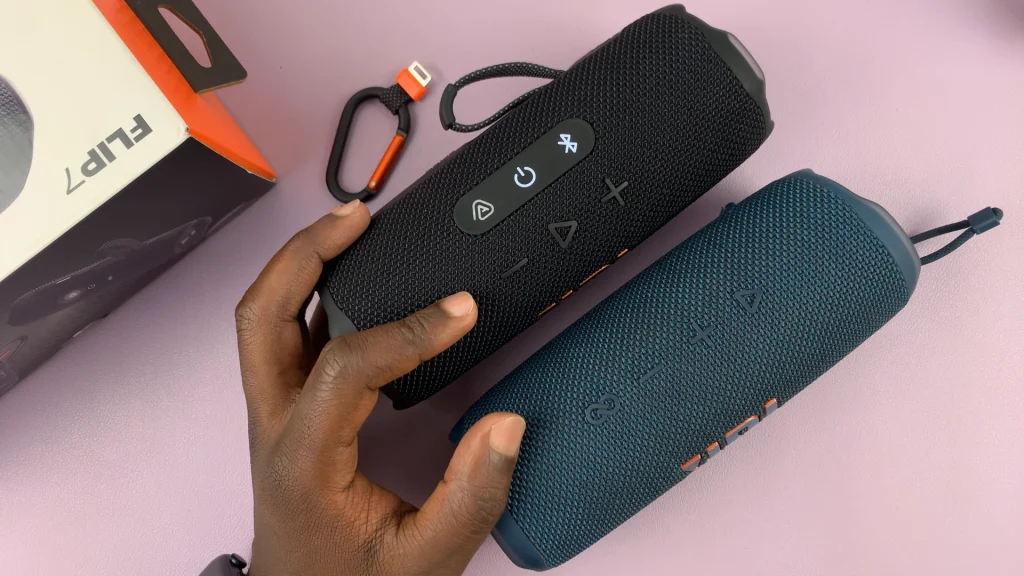
Even though Auracast and PartyBoost are all multi-device technologies, they cannot be used together. the JBL Flip 7 and JBL Flip 6 cannot be linked together. They can only be linked to speakers with the same technology.
Wired Audio Support
Neither model offers a 3.5 mm aux‑in, but the Flip 7 supports lossless audio over USB‑C when connected to a compatible source (phone or computer)—something the Flip 6 lacks. This works without Bluetooth.
To connect the Flip 7 to a phone or PC, using a USB-C to USB-C cable, turn off Bluetooth on your phone to cut the Bluetooth connection between the JBL Flip 7 and your device. This should kill the Bluetooth LED on your speaker as well.
Plug one end of your USB-C to USB-C cable into the device’s USB-C port.
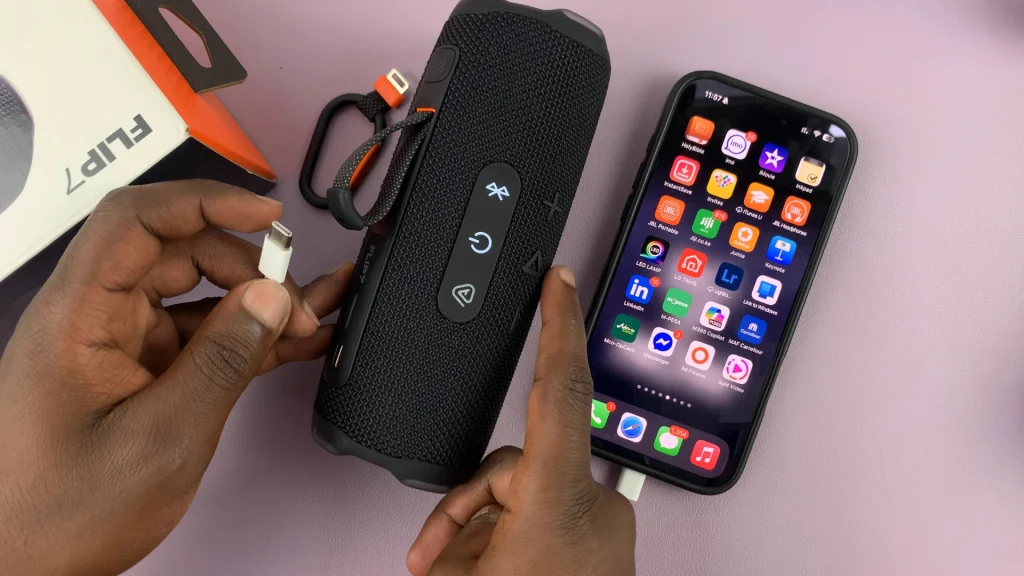
Before you insert the cable into the speaker’s USB-C port, firmly press and hold the Play/Pause button on the JBL Flip 7, without releasing. While still holding the Play/Pause button, insert the other end of the cable into the speaker’s USB-C port.
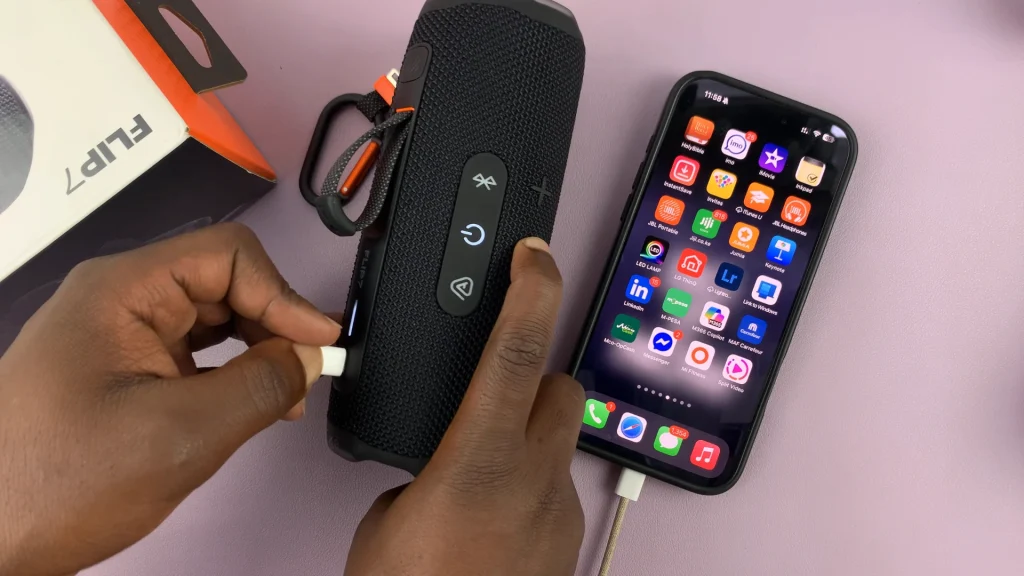
You should hear a notification sound on your JBL Flip 7. This indicates a successful connection. Go to your content playing app and start playing music or video to confirm it works.
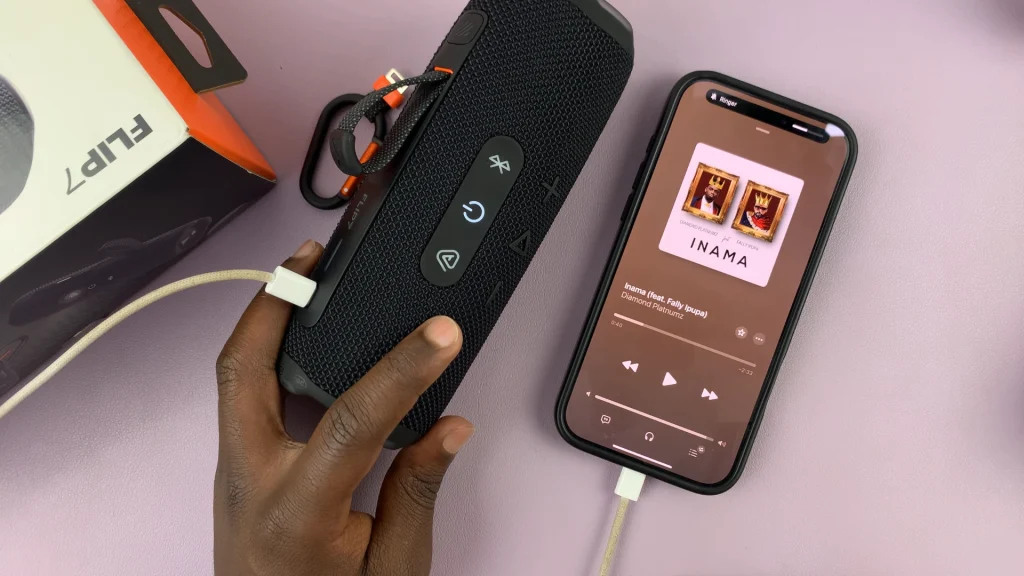
Price & Value
The Flip 6 debuted around $130 / £120, while the Flip 7 holds similar price range globally, debuting at around ~$150 / £130.
With the Flip 6 now an outgoing model, discounts have driven street prices as low as $80–$90/£80–£90. Meanwhile, the Flip 7’s pricing has remained steady near launch figures.
The Case For the JBL Flip 7
Choose the JBL Flip 7 if you want the longest playback and relatively faster charging via USB‑C. If you value AI-driven DSP and a 7-band EQ for precise sound tuning, go for it.
Also, if you plan to leverage Auracast pairing and lossless USB‑C audio, whilst boating the toughest durability (IP68, drop-tested, strap), this speaker is for you.
Meh! I’ll Stick With the JBL Flip 6
Choose the JBL Flip 6 if you are on a tight budget and spot a steep discount (sub‑$100/£100) and if you prefer the simpler PartyBoost ecosystem.
If you don’t require or see the need for USB‑C lossless or advanced EQ control and are happy with solid JBL sound and proven IP67 water resistance, the Flip 6 is alright as well.
Bottom Line
Both the Flip 6 and Flip 7 uphold JBL’s reputation for punchy, portable sound. Your choice hinges on whether you value the latest tech refinements and extended battery life of the Flip 7, or if you’re content with the Flip 6’s tried‑and‑true performance at a bargain price. Either way, you’re guaranteed a capable, adventure‑ready Bluetooth speaker designed to soundtrack your day.
You choose, I gave you my two cents.
Watch: Uninstall MySQL In Windows
